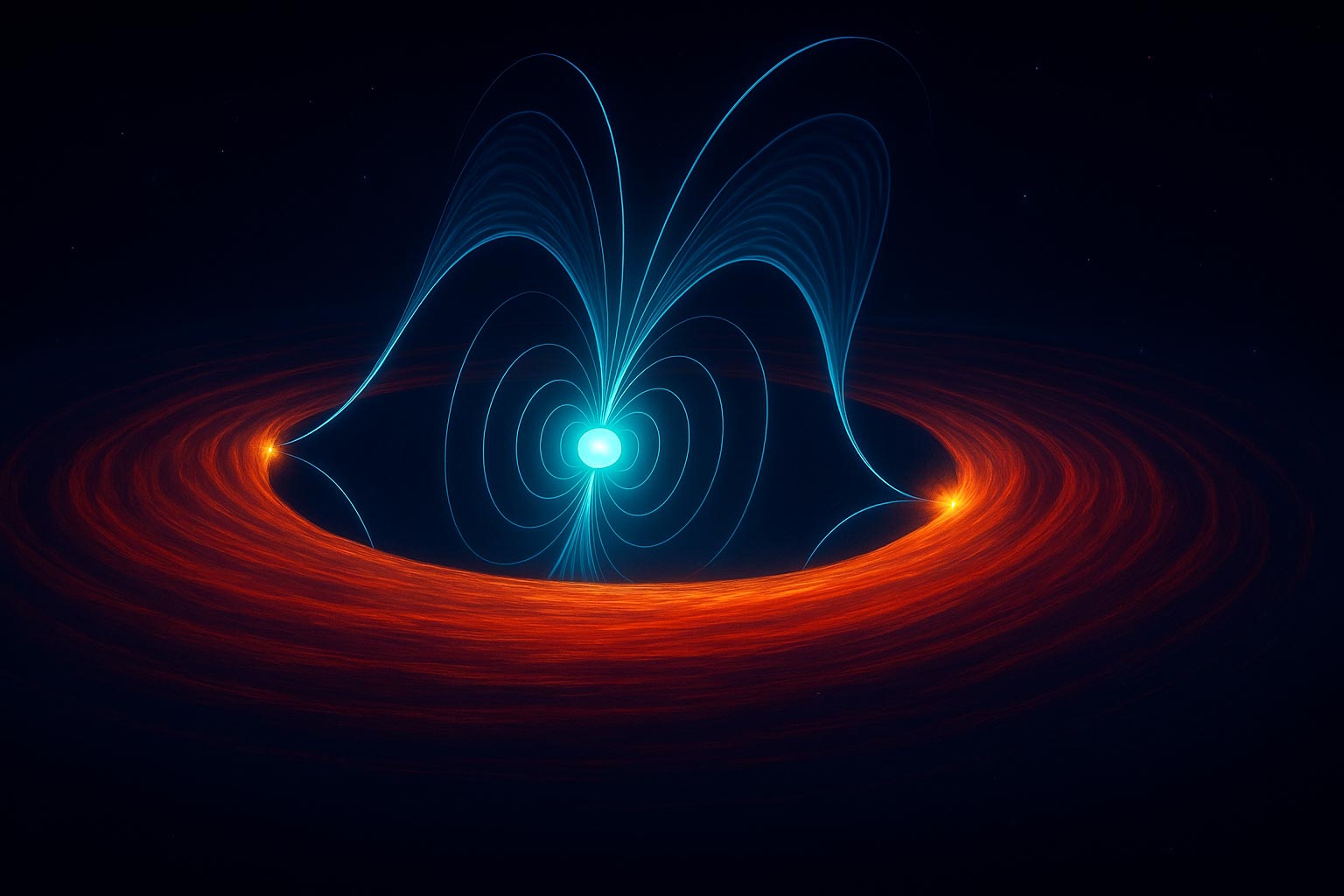💫 How a millisecond pulsar fooled astronomers for years?
Follow us on Google News (click on ☆)

Artist's impression of the binary system PSR J1023+0038, showing the pulsar, its accretion disk and particle wind.
Credit: Marco Maria Messa, University of Milan/INAF-OAB; Maria Cristina Baglio, INAF-OAB
This peculiar pulsar alternates between two distinct states, sometimes pulling matter from its neighboring star, sometimes emitting radio waves. This duality makes it a prime object for studying neutron star evolution in binary systems. IXPE's polarimetric observations revealed that X-rays and visible light share the same polarization, indicating a common origin.
Researchers compared IXPE's data with those from ESO's Very Large Telescope in Chile. This collaboration showed that the pulsar's wind, a mix of particles accelerated to near-light speeds, is responsible for the X-ray emissions. This discovery challenges previous models that attributed this radiation to the accretion disk.
This study opens new perspectives for understanding the physical mechanisms at work in binary systems containing pulsars. Neutron stars, though born from dead stars, continue to illuminate the Universe in unexpected ways. Future IXPE observations promise more revelations about these extreme cosmic objects.
What is a millisecond pulsar?
A millisecond pulsar is a neutron star that spins hundreds of times per second. These objects are often found in binary systems, where they steal matter from a companion star.
This matter, as it falls onto the pulsar, transfers energy and accelerates its rotation. The process can last billions of years, until the pulsar reaches incredibly high spin rates.
Millisecond pulsars emit beams of radiation from their magnetic poles. Like cosmic lighthouses, these beams sweep through space and can be detected from Earth as regular pulses.
These objects are natural laboratories for studying physics under extreme conditions impossible to recreate on Earth.
How is light polarization measured?
Light polarization is a property describing the orientation of electromagnetic wave vibrations. It can reveal information about magnetic fields and the physical processes behind light emission.
Telescopes like IXPE use special detectors to measure this polarization. These instruments can determine the oscillation direction of light waves after passing through different mediums.
For X-rays, polarization measurement is particularly challenging. It requires advanced technology because these high-energy radiations interact differently with matter than visible light.
Polarization data helps astronomers map magnetic fields and understand particle acceleration mechanisms in the Universe.
